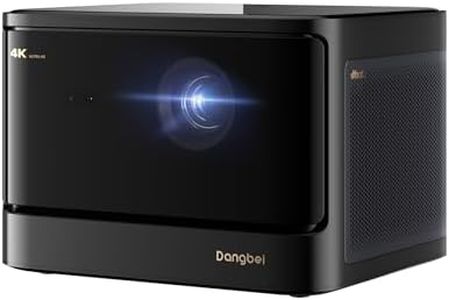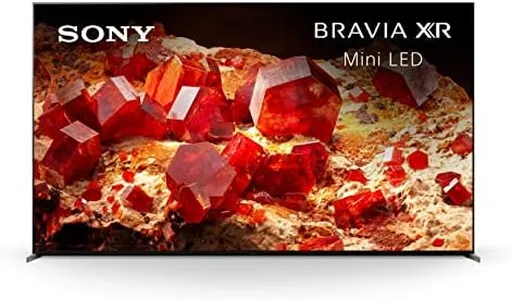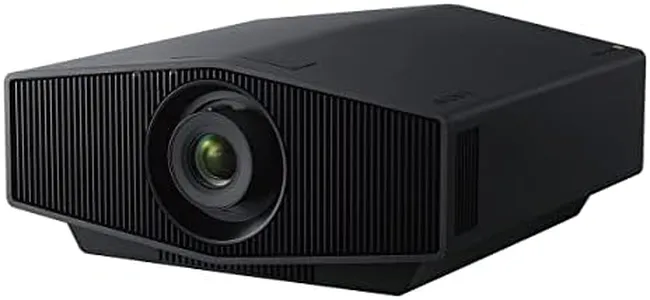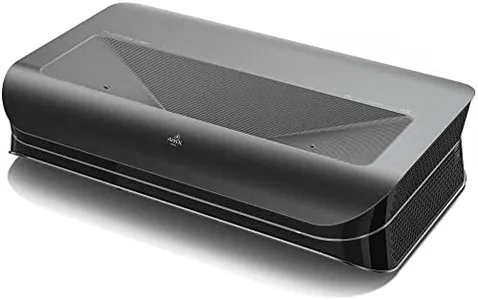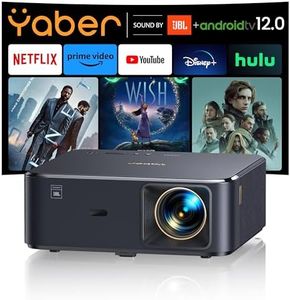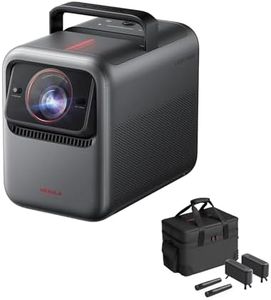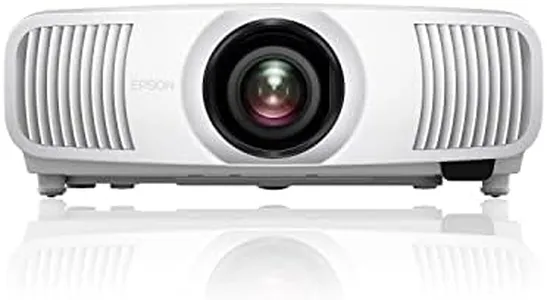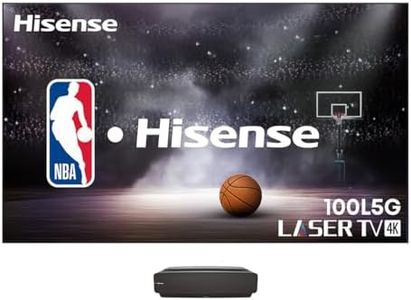10 Best TV Projectors 2025 in the United States
Our technology thoroughly searches through the online shopping world, reviewing hundreds of sites. We then process and analyze this information, updating in real-time to bring you the latest top-rated products. This way, you always get the best and most current options available.

Our Top Picks
Winner
JVC DLA-NZ9 D-ILA Laser Home Theater Projector, 3000 Lumen, Native 4K with 8K e-ShiftX Technology, Frame Adapt HDR, 2-HDMI Inputs, Supports 8K-60P/4K-120P, Ideal for Gaming, HDR10+
Most important from
4 reviews
The JVC DLA-NZ9 is a high-end home theater projector that excels with its impressive native 4K resolution and advanced 8K e-shiftX technology, enhancing sharpness and detail well beyond standard 4K. It delivers bright images at 3,000 lumens, suitable for rooms with some ambient light, which supports versatile viewing conditions. The contrast ratio is exceptional, with a native 100,000:1 that dynamically extends to infinity:1, producing deep blacks and vivid colors that enhance the realism of movies and games.
Its laser light source offers a long lamp life of about 20,000 hours, reducing concerns about replacements over time. Connectivity includes two HDMI inputs supporting modern high-bandwidth signals such as 8K at 60Hz and 4K at 120Hz, ideal for gaming consoles and the latest media devices. Keystone correction and other installation features provide flexible setup options to fit various room layouts easily. The projector also supports HDR10+ and Frame Adapt HDR, automatically optimizing picture quality scene-by-scene.
While the projector is quite large and heavy, which might complicate installation, and has only two HDMI ports that could limit connectivity for multiple devices, its premium performance justifies its high price. This model is well suited for dedicated home theater enthusiasts and gamers seeking top-tier image quality and future-proof specifications.
Most important from
4 reviews
Optoma GT1080HDRx Short Throw Gaming Projector | Enhanced Gaming Mode for 1080p 120Hz Gameplay at 8.4ms | 1080p and HDR support with 4K UHD input | Bright 3,800 Lumens for Day and Night Gaming | White
Most important from
861 reviews
The Optoma GT1080HDRx Short Throw Gaming Projector is a strong choice for gaming and home cinema enthusiasts. It offers a full HD 1080p resolution with HDR10 technology, which supports 4K input for enhanced image quality with brighter whites and deeper blacks. The projector boasts a high brightness of 3,800 lumens, making it suitable for both day and night use, and a contrast ratio of 50,000:1 for sharp, detailed images.
It features a short throw lens, capable of projecting a large 120-inch image from just four feet away, which is ideal for smaller spaces. The enhanced gaming mode provides a quick response time of 8.4ms with a 120Hz refresh rate, ensuring smooth gameplay. With a long lamp life of up to 15,000 hours, users can enjoy extended viewing without frequent replacements.
Connectivity is versatile with dual HDMI inputs and support for various devices like gaming consoles and streaming sticks. However, while the projector excels in many areas, it might not be the best choice for those seeking 4K native resolution. For those needing a reliable and high-quality projector for gaming and home entertainment, the Optoma GT1080HDRx offers impressive performance within its specifications.
Most important from
861 reviews
Sony 75 Inch Mini LED 4K Ultra HD TV X93L Series: BRAVIA XR Smart Google TV with Dolby Vision HDR and Exclusive Features for The PlayStation® 5 XR75X93L- 2023 Model,Black
Most important from
113 reviews
The Sony 75 Inch Mini LED 4K Ultra HD TV X93L Series is an impressive option for those looking for a high-definition viewing experience, particularly for gaming and cinematic content. Its Cognitive Processor XR ensures lifelike picture quality with detailed blacks, natural colors, and high peak brightness, making it suitable for dynamic and realistic visuals.
The use of Mini LEDs and the XR Triluminos Pro technology further enhances color accuracy and contrast, delivering a vibrant and sharp display. With a 4K resolution, the TV provides exceptional clarity and detail, which is ideal for both movies and gaming. The inclusion of Dolby Vision HDR and IMAX Enhanced support offers an immersive cinematic experience, replicating the creators' intent effectively.
For gamers, the TV is optimized for PlayStation 5 with exclusive features like Auto HDR Tone Mapping and Auto Genre Picture Mode, alongside HDMI 2.1 gaming features like 4K/120, VRR, and ALLM. The wide viewing angles and anti-reflective screen ensure consistent picture quality from different positions, which is great for group viewing. Connectivity options are robust with Bluetooth, Wi-Fi, USB, Ethernet, and HDMI, making it easy to connect various devices and stream content.
Most important from
113 reviews
Buying Guide for the Best TV Projectors
When choosing a TV projector, it's important to consider several key specifications to ensure you get the best fit for your needs. A TV projector can transform your viewing experience, but the right choice depends on where and how you plan to use it. Here are the main specs to consider and how to navigate them.FAQ
Most Popular Categories Right Now
